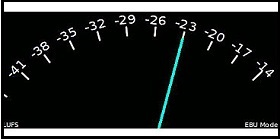How Do You Measure Up? | Telos Alliance
By The Telos Alliance Team on Jul 9, 2014 9:00:00 AM
 How Do You Measure Up?
How Do You Measure Up?
Over the past several years, the worldwide attention of audio loudness in television broadcasting has grown and it’s now common knowledge that both proper audio measurement and loudness control are required in all aspects of content delivery. Today, there is a new international standard for measuring loudness. Knowing what it is, and understanding how to use it, are critical steps in making reliable and useful loudness measurements.
The current ITU (International Telecommunications Union) standard for measuring loudness is ITU-R B.S. 1770. Both the EBU R-128 and ATSC A/85 recommended practice documents specify the use of B.S. 1770 for loudness measurements. Now in its third revision, B.S. 1770-3 has been accepted all over the world for measuring the loudness of television broadcast audio and is considered the standard.
This new method of measuring audio levels is quite different from the VU and PPM meters that we are all accustomed to. The VU meter, VU plus peak indicating meters, and PPM meters are all excellent ways to measure the electrical amplitude of audio signals, but none of these meters tells us much about how loud a program or test signal actually sounds. Experienced audio mixers know the VU meters can move while the mix does not perceptibly change in volume, and the peak and PPM meters are much the same. Because of this, the ITU set out to develop a meter that reliably measures perceived loudness (how loud it sounds to humans), and the creation of B.S. 1770 standard was the result.
We do not perceive loudness instantaneously, but instead, over a period of time. Typical loudness meters offer a range of measurement integration times, as well as a measurement that integrates loudness  measurement over a manually controlled duration.
measurement over a manually controlled duration.
An EBU-compliant meter will include the following measurements (though all of these do not have to be visible at the same time): continuous metering with a 400ms window called “M” or Momentary measurement; continuous metering with a 3 sec window called “S” or Short measurement; and integrated measurement called “I”, for program or segment measurement. Integrated measurement is done by starting the measurement at the beginning of a program element, and stopping it at the close of the program element. These programs and segments can range from a 10 second commercial, to a 2 minute news break, or even the 12 minutes of drama between commercial breaks.
In order for loudness measurements to be compared by two or more people, there needs to be an agreement on what meter settings to use and an understanding that the Momentary and Short term measurements may differ slightly. This is normal because the measurement windows of two different meters will not be exactly in alignment with each other. To compare integrated measurements, the start and stop times of the measurement will need to be synced together when comparing measurements of the same program. Even though professional meters will all agree, it is the users that are responsible for making loudness measurements using the correct settings. Taking the time to understand the new loudness measurements can then help to ensure that your content will be measured correctly by everyone.
Loudness control that sounds good and meets regulatory standards is possible. Understanding the new measurement standard is the first step, but is definitely worth the effort. Viewers are listening.
The ITU BS.1770 standard is available at: http://www.itu.int/rec/R-REC-BS.1770-3-201208-I/en and is published in 6 languages.
Telos Alliance has led the audio industry’s innovation in Broadcast Audio, Digital Mixing & Mastering, Audio Processors & Compression, Broadcast Mixing Consoles, Audio Interfaces, AoIP & VoIP for over three decades. The Telos Alliance family of products include Telos® Systems, Omnia® Audio, Axia® Audio, Linear Acoustic®, 25-Seven® Systems, Minnetonka™ Audio and Jünger Audio. Covering all ranges of Audio Applications for Radio & Television from Telos Infinity IP Intercom Systems, Jünger Audio AIXpressor Audio Processor, Omnia 11 Radio Processors, Axia Networked Quasar Broadcast Mixing Consoles and Linear Acoustic AMS Audio Quality Loudness Monitoring and 25-Seven TVC-15 Watermark Analyzer & Monitor. Telos Alliance offers audio solutions for any and every Radio, Television, Live Events, Podcast & Live Streaming Studio With Telos Alliance “Broadcast Without Limits.”
Recent Posts
Subscribe
If you love broadcast audio, you'll love Telos Alliance's newsletter. Get it delivered to your inbox by subscribing below!